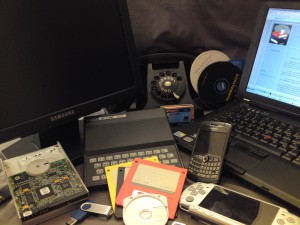The Weight of Mobility

I have a love/hate relationship with the mobile phone. I appreciate and am fascinated by how a smart phone works, but hate the invasion into our personal life.
Have you seen what is happening in China? In order to initiate new mobile phone service, the customer must submit to a facial recognition scan. The Chinese government wants to assure that they know exactly who is making a call, accessing data, or texting. The claim they want to “protect the legitimate rights and interest of citizens in cyberspace.”
Like all invasions of privacy, this policy is being put forward as a way to help protect the citizen consumer. Unfortunately, it is not hard to imagine that this will be the requirement for us very soon.
The idea for the mobile phone was first introduced by Martin Cooper in 1973, while he worked for Motorola’s communications systems division. Cooper believed that a phone number should be assigned to a person, not to a desk or a home; and that everyone would be able to use a wireless phone instead of being connected to a wired phone. Cooper had thought not being connected to a traditional wired phone would be freeing to the individual. It was not unusual, and I certainly remember the time, when I would have to wait for a phone call, at my house; Cooper sought to free me of this weight and the wait. https://tinyurl.com/h3euvzc
Shortly after Martin Cooper would introduce the idea of a mobile phone he would have a prototype. The first mobile phone would be called the DynaTac and would weigh over 2.5 pounds. The phone had only twenty minutes of talk time. By the fourth revision, the weight of the mobile phone was cut in half. Cooper and his team scheduled a press conference at the New York Hilton Midtown Manhattan, to demonstrate the mobile phone. Cooper would make the first call to his chief competitor at AT&T.
I will add a bit of personal history here and note that Jill and I have seen the historical marker and have stayed at the New York Hilton in Midtown Manhattan where that first phone call was made by Cooper.
The first cellular network was called Advanced Mobile Phone System AMPS, and it was an analog mobile phone system, also known as 1G, with the ability to make mobile phone calls. In 1991, 2G would launch and would be digital instead of analog, which allowed it to send texts; it was comprised of mobile phone calls and short message service SMS. In 1998, 3G launched, which would allow mobile phones to send and receive data over the Internet so that the phone could do mobile phone browsing. By 2009 4G would launch and would deliver more speed and larger data sets, such as videos.
Today 5G has arrived, but not everywhere; it is the technology that will bridge the gap between mobile devices and humans. What do I mean by this? This latest technology, 5G, has the ability to move more data at greater speeds while allowing more devices to connect and be more responsive. An example would be medical devices, which can connect and retrieve data in real time. It is quite appropriate that as we start a new decade that will be seeing a rise in a whole new set of technologies, all birthed from an idea of not being connected to a place.
It all sounds wonderful, and in fact so much of it is; but something has gone terribly wrong. How did we go from Cooper’s vision of granting us freedom from wires to now being bound to this wireless millstone?
Bondage does seem like a strong word, but today it is a reality that our mobile devices represent so much of our identities; so much so that governments want to make sure that the actual user of a mobile device is the person in their records.
Our life is being mapped by data points; it may well be that there is no turning back. However, we still have some control over those wireless devices and how much information we allow them to use.
As we ring in the New Year, and the new decade, let us be diligent in staying safely Connected. Be sure to always review the apps on your phone and what permissions they have by default. Many of the permissions can be changed and remove apps that you do not use anymore.











Well put together Kate! Enjoyed reading your article, very true.